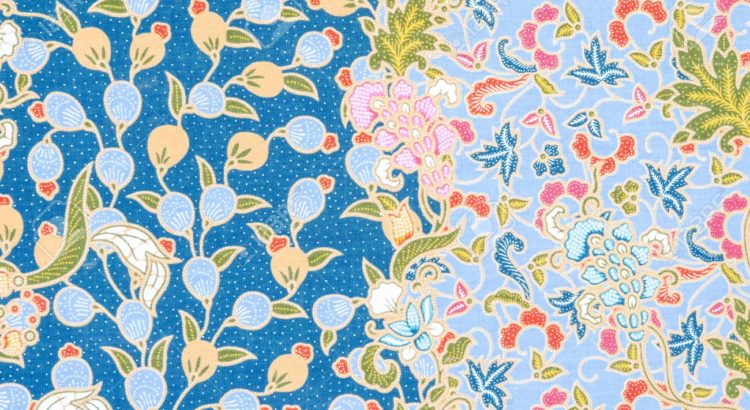 Batik is an Indonesian technique of applying wax-resist dying on cloth. This technique is originally from Java, Indonesia although it has many roots elsewhere. It is usually drawn using the spouted tool on the left which is filled with wax. This method is called canting (pronounced as chanting). The other method is by printing using a copper stamp called cap (pronounced as chup).
Batik is an Indonesian technique of applying wax-resist dying on cloth. This technique is originally from Java, Indonesia although it has many roots elsewhere. It is usually drawn using the spouted tool on the left which is filled with wax. This method is called canting (pronounced as chanting). The other method is by printing using a copper stamp called cap (pronounced as chup).
Although Malaysia also has batik, the art form is most developed in Indonesia. Batik cloths or kain batik is used to make outfits such as shirts, skirts, matching top and bottoms and are even used in loose form such as table covers and as sarungs (now you know that is a Malay word) which is a loose wraparound tied to the waist. Other interesting uses include using the cloth as a bed sheet protector to prevent leaks during menstruation, as slings to carry babies, present wrappers and even occasionally made as a hat. When I was at school, almost every girl I knew owned at least one kain batik to use as a sarung or for menstruation purposes.
In Malaysia, batik motifs rarely depict animals or humans because Islam forbids animal images as decoration. Butterflies are an exception however. Malaysian batik is also more vibrant and uses different methods to draw its designs.
exception however. Malaysian batik is also more vibrant and uses different methods to draw its designs.
Interestingly, batik is also produced in Africa. This is because batik can be traced back to when the Egyptians embalmed mummies and the linen was dipped in wax and scratched with a stylus. Nelson Mandela was noted to wear African batiks frequently to his business and political meetings. Because of this, he became a fashion icon and was considered brave for wearing batiks everywhere whereas other leaders opt for the traditional Western attire.
Other batik influences include Japanese, Chinese, Sri Lankan and Indian motifs.
If you are interested in batik, you can purchase them over Etsy in loose form as sarungs.







(Credits: Wikipedia, Image source: Google Images)



Leave a Reply
4 Comments on "Batik"
Does the UM maintain a collection of Indonesian textiles? If so, could you forward to me information as to
the pesonnel involved with this collection.
You can try asking the South East Asian department or the musuems. I’m not sure myself to be honest -sarah
always wondered how this stuff was made!
Glad to enlighten!